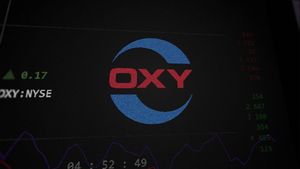
SEOUL, South Korea – October 2, 2025 – A staggering 9 trillion Korean won (approximately $6.4 billion USD) in foreign investment has flooded into South Korea's semiconductor titans, Samsung Electronics (KRX: 005930) and SK Hynix (KRX: 000660), marking a pivotal moment in the global artificial intelligence (AI) race. This unprecedented influx of capital, peaking with a dramatic surge on October 2, 2025, is a direct response to the insatiable demand for advanced AI hardware, spearheaded by OpenAI's ambitious "Stargate Project." The investment underscores a profound shift in market confidence towards AI-driven semiconductor growth, positioning South Korea at the epicenter of the next technological frontier.
The massive capital injection follows OpenAI CEO Sam Altman's visit to South Korea on October 1, 2025, where he formalized partnerships through letters of intent with both Samsung Group and SK Group. The Stargate Project, a monumental undertaking by OpenAI, aims to establish global-scale AI data centers and secure an unparalleled supply of cutting-edge semiconductors. This collaboration is set to redefine the memory chip market, transforming the South Korean semiconductor industry and accelerating the pace of global AI development to an unprecedented degree.
The Technical Backbone of AI's Future: HBM and Stargate's Demands
At the heart of this investment surge lies the critical role of High Bandwidth Memory (HBM) chips, indispensable for powering the complex computations of advanced AI models. OpenAI's Stargate Project alone projects a staggering demand for up to 900,000 DRAM wafers per month – a figure that more than doubles the current global HBM production capacity. This monumental requirement highlights the technical intensity and scale of infrastructure needed to realize next-generation AI. Both Samsung Electronics and SK Hynix, holding an estimated 80% collective market share in HBM, are positioned as the indispensable suppliers for this colossal undertaking.
SK Hynix, currently the market leader in HBM technology, has committed to a significant boost in its AI-chip production capacity. Concurrently, Samsung is aggressively intensifying its research and development efforts, particularly in its next-generation HBM4 products, to meet the burgeoning demand. The partnerships extend beyond mere memory chip supply; Samsung affiliates like Samsung SDS (KRX: 018260) will contribute expertise in data center design and operations, while Samsung C&T (KRX: 028260) and Samsung Heavy Industries (KRX: 010140) are exploring innovative concepts such as joint development of floating data centers. SK Telecom (KRX: 017670), an SK Group affiliate, will also collaborate with OpenAI on a domestic initiative dubbed "Stargate Korea." This holistic approach to AI infrastructure, encompassing not just chip manufacturing but also data center innovation, marks a significant departure from previous investment cycles, signaling a sustained, rather than cyclical, growth trajectory for advanced semiconductors. The initial reaction from the AI research community and industry experts has been overwhelmingly positive, with the stock market reflecting immediate confidence. On October 2, 2025, shares of Samsung Electronics and SK Hynix experienced dramatic rallies, pushing them to multi-year and all-time highs, respectively, adding over $30 billion to their combined market capitalization and propelling South Korea's benchmark KOSPI index to a record close. Foreign investors were net buyers of a record 3.14 trillion Korean won worth of stocks on this single day.
Impact on AI Companies, Tech Giants, and Startups
The substantial foreign investment into Samsung and SK Hynix, fueled by OpenAI’s Stargate Project, is poised to send ripples across the entire AI ecosystem, profoundly affecting companies of all sizes. OpenAI itself emerges as a primary beneficiary, securing a crucial strategic advantage by locking in a vast and stable supply of High Bandwidth Memory for its ambitious project. This guaranteed access to foundational hardware is expected to significantly accelerate its AI model development and deployment cycles, strengthening its competitive position against rivals like Google DeepMind, Anthropic, and Meta AI. The projected demand for up to 900,000 DRAM wafers per month by 2029 for Stargate, more than double the current global HBM capacity, underscores the critical nature of these supply agreements for OpenAI's future.
For other tech giants, including those heavily invested in AI such as NVIDIA (NASDAQ: NVDA), Google (NASDAQ: GOOGL), Microsoft (NASDAQ: MSFT), Amazon (NASDAQ: AMZN), and Meta (NASDAQ: META), this intensifies the ongoing "AI arms race." Companies like NVIDIA, whose GPUs are cornerstones of AI infrastructure, will find their strategic positioning increasingly intertwined with memory suppliers. The assured supply for OpenAI will likely compel other tech giants to pursue similar long-term supply agreements with memory manufacturers or accelerate investments in their own custom AI hardware initiatives, such as Google’s TPUs and Amazon’s Trainium, to reduce external reliance. While increased HBM production from Samsung and SK Hynix, initially tied to specific deals, could eventually ease overall supply, it may come at potentially higher prices due to HBM’s critical role.
The implications for AI startups are complex. While a more robust HBM supply chain could eventually benefit them by making advanced memory more accessible, the immediate effect could be a heightened "AI infrastructure arms race." Well-resourced entities might further consolidate their advantage by locking in supply, potentially making it harder for smaller startups to secure the necessary high-performance memory chips for their innovative projects. However, the increased investment in memory technology could also foster specialized innovation in smaller firms focusing on niche AI hardware solutions or software optimization for existing memory architectures. Samsung and SK Hynix, for their part, solidify their leadership in the advanced memory market, particularly in HBM, and guarantee massive, stable revenue streams from the burgeoning AI sector. SK Hynix has held an early lead in HBM, capturing approximately 70% of the global HBM market share and 36% of the global DRAM market share in Q1 2025. Samsung is aggressively investing in HBM4 development to catch up, aiming to surpass 30% market share by 2026. Both companies are reallocating resources to prioritize AI-focused production, with SK Hynix planning to double its HBM output in 2025. The upcoming HBM4 generation will introduce client-specific "base die" layers, strengthening supplier-client ties and allowing for performance fine-tuning. This transforms memory providers from mere commodity suppliers into critical partners that differentiate the final solution and exert greater influence on product development and pricing. OpenAI’s accelerated innovation, fueled by a secure HBM supply, could lead to the rapid development and deployment of more powerful and accessible AI applications, potentially disrupting existing market offerings and accelerating the obsolescence of less capable AI solutions. While Micron Technology (NASDAQ: MU) is also a key player in the HBM market, having sold out its HBM capacity for 2025 and much of 2026, the aggressive capacity expansion by Samsung and SK Hynix could lead to a potential oversupply by 2027, which might shift pricing power. Micron is strategically building new fabrication facilities in the U.S. to ensure a domestic supply of leading-edge memory.
Wider Significance: Reshaping the Global AI and Economic Landscape
This monumental investment signifies a transformative period in AI technology and implementation, marking a definitive shift towards an industrial scale of AI development and deployment. The massive capital injection into HBM infrastructure is foundational for unlocking advanced AI capabilities, representing a profound commitment to next-generation AI that will permeate every sector of the global economy.
Economically, the impact is multifaceted. For South Korea, the investment significantly bolsters its national ambition to become a global AI hub and a top-three global AI nation, positioning its memory champions as critical enablers of the AI economy. It is expected to lead to significant job creation and expansion of exports, particularly in advanced semiconductors, contributing substantially to overall economic growth. Globally, these partnerships contribute significantly to the burgeoning AI market, which is projected to reach $190.61 billion by 2025. Furthermore, the sustained and unprecedented demand for HBM could fundamentally transform the historically cyclical memory business into a more stable growth engine, potentially mitigating the boom-and-bust patterns seen in previous decades and ushering in a prolonged "supercycle" for the semiconductor industry.
However, this rapid expansion is not without its concerns. Despite strong current demand, the aggressive capacity expansion by Samsung and SK Hynix in anticipation of continued AI growth introduces the classic risk of oversupply by 2027, which could lead to price corrections and market volatility. The construction and operation of massive AI data centers demand enormous amounts of power, placing considerable strain on existing energy grids and necessitating continuous advancements in sustainable technologies and energy infrastructure upgrades. Geopolitical factors also loom large; while the investment aims to strengthen U.S. AI leadership through projects like Stargate, it also highlights the reliance on South Korean chipmakers for critical hardware. U.S. export policy and ongoing trade tensions could introduce uncertainties and challenges to global supply chains, even as South Korea itself implements initiatives like the "K-Chips Act" to enhance its semiconductor self-sufficiency. Moreover, despite the advancements in HBM, memory remains a critical bottleneck for AI performance, often referred to as the "memory wall." Challenges persist in achieving faster read/write latency, higher bandwidth beyond current HBM standards, super-low power consumption, and cost-effective scalability for increasingly large AI models. The current investment frenzy and rapid scaling in AI infrastructure have drawn comparisons to the telecom and dot-com booms of the late 1990s and early 2000s, reflecting a similar urgency and intense capital commitment in a rapidly evolving technological landscape.
The Road Ahead: Future Developments in AI and Semiconductors
Looking ahead, the AI semiconductor market is poised for continued, transformative growth in the near-term, from 2025 to 2030. Data centers and cloud computing will remain the primary drivers for high-performance GPUs, HBM, and other advanced memory solutions. The HBM market alone is projected to nearly double in revenue in 2025 to approximately $34 billion and continue growing by 30% annually until 2030, potentially reaching $130 billion. The HBM4 generation is expected to launch in 2025, promising higher capacity and improved performance, with Samsung and SK Hynix actively preparing for mass production. There will be an increased focus on customized HBM chips tailored to specific AI workloads, further strengthening supplier-client relationships. Major hyperscalers will likely continue to develop custom AI ASICs, which could shift market power and create new opportunities for foundry services and specialized design firms. Beyond the data center, AI's influence will expand rapidly into consumer electronics, with AI-enabled PCs expected to constitute 43% of all shipments by the end of 2025.
In the long-term, extending from 2030 to 2035 and beyond, the exponential demand for HBM is forecast to continue, with unit sales projected to increase 15-fold by 2035 compared to 2024 levels. This sustained growth will drive accelerated research and development in emerging memory technologies like Resistive Random Access Memory (ReRAM) and Magnetoresistive RAM (MRAM). These non-volatile memories offer potential solutions to overcome current memory limitations, such as power consumption and latency, and could begin to replace traditional memories within the next decade. Continued advancements in advanced semiconductor packaging technologies, such as CoWoS, and the rapid progression of sub-2nm process nodes will be critical for future AI hardware performance and efficiency. This robust infrastructure will accelerate AI research and development across various domains, including natural language processing, computer vision, and reinforcement learning. It is expected to drive the creation of new markets for AI-powered products and services in sectors like autonomous vehicles, smart home technologies, and personalized digital assistants, as well as addressing global challenges such as optimizing energy consumption and improving climate forecasting.
However, significant challenges remain. Scaling manufacturing to meet extraordinary demand requires substantial capital investment and continuous technological innovation from memory makers. The energy consumption and environmental impact of massive AI data centers will remain a persistent concern, necessitating significant advancements in sustainable technologies and energy infrastructure upgrades. Overcoming the inherent "memory wall" by developing new memory architectures that provide even higher bandwidth, lower latency, and greater energy efficiency than current HBM technologies will be crucial for sustained AI performance gains. The rapid evolution of AI also makes predicting future memory requirements difficult, posing a risk for long-term memory technology development. Experts anticipate an "AI infrastructure arms race" as major AI players strive to secure similar long-term hardware commitments. There is a strong consensus that the correlation between AI infrastructure expansion and HBM demand is direct and will continue to drive growth. The AI semiconductor market is viewed as undergoing an infrastructural overhaul rather than a fleeting trend, signaling a sustained era of innovation and expansion.
Comprehensive Wrap-up
The 9 trillion Won foreign investment into Samsung and SK Hynix, propelled by the urgent demands of AI and OpenAI's Stargate Project, marks a watershed moment in technological history. It underscores the critical role of advanced semiconductors, particularly HBM, as the foundational bedrock for the next generation of artificial intelligence. This event solidifies South Korea's position as an indispensable global hub for AI hardware, while simultaneously catapulting its semiconductor giants into an unprecedented era of growth and strategic importance.
The immediate significance is evident in the historic stock market rallies and the cementing of long-term supply agreements that will power OpenAI's ambitious endeavors. Beyond the financial implications, this investment signals a fundamental shift in the semiconductor industry, potentially transforming the cyclical memory business into a sustained growth engine driven by constant AI innovation. While concerns about oversupply, energy consumption, and geopolitical dynamics persist, the overarching narrative is one of accelerated progress and an "AI infrastructure arms race" that will redefine global technological leadership.
In the coming weeks and months, the industry will be watching closely for further details on the Stargate Project's development, the pace of HBM capacity expansion from Samsung and SK Hynix, and how other tech giants respond to OpenAI's strategic moves. The long-term impact of this investment is expected to be profound, fostering new applications, driving continuous innovation in memory technologies, and reshaping the very fabric of our digital world. This is not merely an investment; it is a declaration of intent for an AI-powered future, with South Korean semiconductors at its core.
This content is intended for informational purposes only and represents analysis of current AI developments.
TokenRing AI delivers enterprise-grade solutions for multi-agent AI workflow orchestration, AI-powered development tools, and seamless remote collaboration platforms.
For more information, visit https://www.tokenring.ai/.







